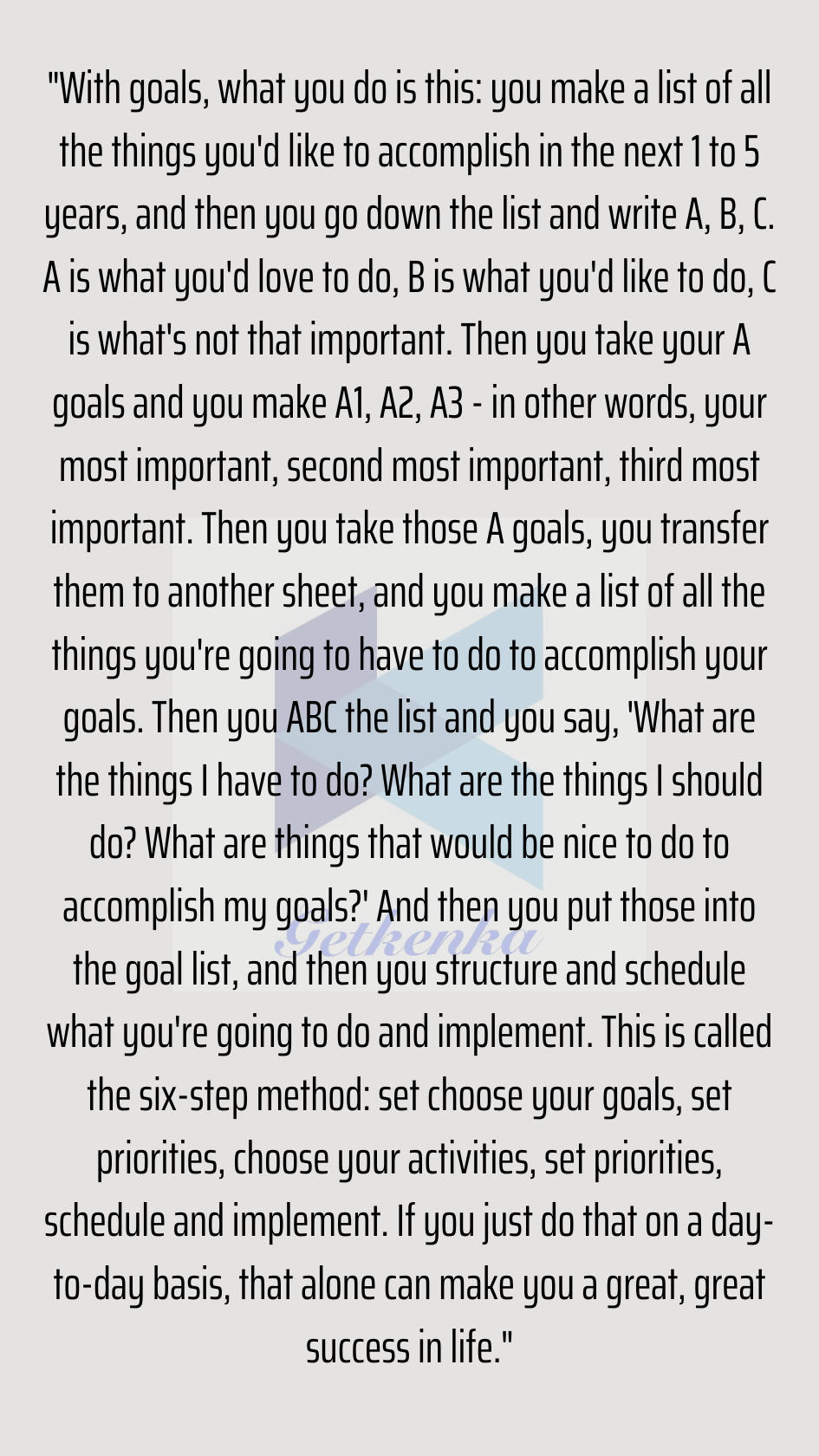
Understanding the Importance of Goal Setting
Setting goals is the cornerstone of success. Without a clear target, our efforts can become scattered and less productive. I have learned that defining what I want to achieve provides not only direction but also a benchmark against which I can measure my progress. Goal setting is more than a mere exercise; it is a critical component of personal and professional growth.
When I set goals, I am essentially creating a roadmap for my future. This roadmap helps me navigate the complexities of life and work, guiding me toward meaningful accomplishments. It is a proactive approach that allows me to take charge of my destiny rather than leaving it to chance. By establishing clear objectives, I ensure that my actions are aligned with my values and aspirations.
Moreover, goal setting fosters a sense of responsibility and accountability. When I have specific targets to aim for, I am more likely to stay committed and motivated. It also enables me to track my progress, identify areas for improvement, and celebrate my successes along the way. In essence, setting goals transforms dreams into achievable outcomes.
Defining What Success Means to You
Success is a deeply personal concept that varies from person to person. To achieve a goal successfully, I must first define what success looks like for me. This means reflecting on my values, priorities, and aspirations. It might involve career advancement, personal fulfillment, financial stability, or a combination of these and other factors.
Understanding what success means to me helps me set relevant and meaningful goals. It ensures that I am not chasing someone else's idea of success, but rather pursuing what truly matters to me. This clarity brings a sense of purpose and direction to my efforts, making the journey toward my goals more fulfilling.
In defining success, I also consider the balance between my personal and professional life. Achieving success in one area should not come at the expense of another. By aligning my goals with my broader life vision, I can create a harmonious and sustainable path to success. This holistic approach ensures that my achievements contribute to my overall well-being and happiness.
The Psychology Behind Achieving Goals
The psychology of goal achievement is a fascinating area that delves into motivation, behavior, and the mind's role in success. Understanding these psychological principles can significantly enhance my ability to achieve my goals. One key concept is the power of intrinsic motivation – the internal drive that propels me toward my objectives because they are personally rewarding.
Research shows that when I am intrinsically motivated, I am more likely to stay committed to my goals, even in the face of challenges. This is because my actions are fueled by a genuine interest and enjoyment in the task at hand, rather than external rewards or pressures. Cultivating intrinsic motivation can involve connecting my goals to my passions and values, ensuring they align with my long-term vision.
Another crucial psychological factor is self-efficacy – my belief in my ability to succeed. When I have confidence in my skills and capabilities, I am more likely to take on challenges and persist in the face of setbacks. Building self-efficacy involves setting achievable goals, celebrating small wins, and learning from failures. Over time, this confidence grows, empowering me to tackle even more ambitious objectives.
Steps to Create an Effective Goal Plan
Creating an effective goal plan is a structured process that involves several key steps. The first step is to clearly define my goals using specific and measurable terms. This clarity ensures that I have a precise understanding of what I am working toward, eliminating any ambiguity that could hinder my progress.
Once my goals are defined, I need to break them down into manageable tasks or milestones. This step-by-step approach makes the process less overwhelming and allows me to focus on one aspect at a time. I prioritize these tasks based on urgency and importance, creating a timeline that guides my efforts and keeps me on track.
Finally, I establish a system for monitoring my progress and making adjustments as needed. This involves regular check-ins to assess whether I am on target, as well as flexibility to adapt my plan in response to unforeseen challenges or opportunities. By following these steps, I create a comprehensive blueprint that maximizes my chances of achieving my goals successfully.
Setting SMART Goals: A Detailed Guide
The SMART criteria provide a valuable framework for setting effective goals. SMART stands for Specific, Measurable, Achievable, Relevant, and Time-bound. When I apply these criteria, I ensure that my goals are well-defined and actionable, increasing the likelihood of success.
Specific: I make my goals as clear and specific as possible. Vague objectives can lead to confusion and lack of focus. A specific goal might be "increase my sales by 20% in the next quarter" rather than simply "improve sales."
Measurable: To track my progress, I establish criteria for measuring success. This allows me to assess whether I am on track and make necessary adjustments. A measurable goal provides tangible evidence of achievement.
Achievable: While it is important to aim high, I ensure that my goals are realistic and attainable. Setting impossible targets can lead to frustration and demotivation. Achievable goals challenge me while remaining within the realm of possibility.
Relevant: My goals should align with my broader objectives and values. They should contribute to my overall vision and priorities, ensuring that my efforts are meaningful and purposeful.
Time-bound: I set a deadline for achieving my goals. This creates a sense of urgency and encourages consistent progress. Time-bound goals prevent procrastination and help maintain momentum.
By setting SMART goals, I create a structured and effective plan for success. This approach provides a clear path forward and keeps me focused on what truly matters.
Overcoming Obstacles: Common Challenges in Goal Achievement
Achieving goals is rarely a straightforward journey; it often involves overcoming various obstacles along the way. One common challenge is procrastination, which can derail my progress and lead to missed opportunities. To combat procrastination, I break tasks into smaller, manageable parts and set deadlines for each. This creates a sense of urgency and makes the process less overwhelming.
Another obstacle is the fear of failure, which can prevent me from taking necessary risks or trying new approaches. To overcome this fear, I remind myself that setbacks are a natural part of the journey and that each failure is an opportunity to learn and grow. By embracing a growth mindset, I view challenges as stepping stones rather than roadblocks.
Additionally, maintaining motivation can be difficult, especially when faced with long-term goals. To stay motivated, I focus on the intrinsic rewards of achieving my objectives, such as personal growth and fulfillment. I also seek support from mentors, peers, or accountability partners who can provide encouragement and guidance. By addressing these challenges head-on, I increase my resilience and ability to achieve my goals successfully.
Staying Motivated: Tips for Keeping Your Focus
Maintaining motivation is crucial for the successful achievement of goals, especially when faced with setbacks or long-term objectives. One effective strategy is to regularly revisit my "why" – the underlying reason for pursuing my goals. This helps me stay connected to the bigger picture and reinforces my commitment.
To keep my focus, I also set interim milestones that provide opportunities for celebration and reflection. These smaller victories serve as reminders of my progress and fuel my motivation to continue. Additionally, I regularly review and adjust my goals to ensure they remain relevant and aligned with my evolving priorities.
Incorporating variety into my approach can also enhance motivation. By exploring different methods or perspectives, I keep the process fresh and engaging. This might involve seeking inspiration from new sources, trying alternative strategies or collaborating with others. By staying motivated, I maintain the momentum necessary to achieve my goals successfully.
Tools and Resources for Goal Tracking
Tracking my progress is essential for staying on course and ensuring the successful achievement of my goals. Fortunately, there are numerous tools and resources available to assist me in this endeavor. One effective tool is a digital planner or goal-tracking app, which allows me to set, monitor, and adjust my objectives in real time.
Additionally, I utilize project management software to organize tasks, set deadlines, and collaborate with others. These tools provide a visual overview of my progress and help me prioritize tasks effectively. I also maintain a journal to reflect on my experiences, document lessons learned, and celebrate my successes.
Furthermore, I leverage online communities and forums to connect with like-minded individuals who share similar goals. These platforms provide valuable insights, support, and accountability, enhancing my motivation and resilience. By utilizing these tools and resources, I create a comprehensive system for tracking my progress and achieving my goals successfully.
Celebrating Milestones: The Importance of Acknowledging Progress
Celebrating milestones is a vital aspect of the goal-achievement process. It serves as a powerful motivator and reinforcement of my efforts, encouraging me to continue striving toward my objectives. When I acknowledge my progress, I boost my confidence and maintain a positive mindset, which is essential for long-term success.
One effective way to celebrate milestones is to set specific rewards for reaching key stages of my journey. These rewards can be as simple as treating myself to a favorite activity or sharing my achievements with friends and family. By associating positive experiences with milestones, I create a sense of anticipation and excitement.
In addition to celebrating my successes, I also take time to reflect on the lessons learned along the way. This reflection helps me identify areas for improvement and reinforces my commitment to continuous growth. By acknowledging my progress, I cultivate a sense of fulfillment and motivation to keep moving forward.
Conclusion: Embracing the Journey to Success
Achieving a goal successfully is a multifaceted process that requires careful planning, perseverance, and adaptability. It is a journey that involves setting clear objectives, overcoming obstacles, and celebrating progress along the way. By mastering the art of goal achievement, I empower myself to realize my aspirations and create a fulfilling and purposeful life.
The journey to success is not always linear, but it is rich with opportunities for growth and self-discovery. By embracing this journey, I cultivate resilience, adaptability, and a deep sense of accomplishment. Ultimately, success is not just about reaching the destination, but about the person I become in the process.
As I continue on this path, I invite you to join me in setting and pursuing your own goals. Together, we can support and inspire each other to achieve remarkable things. Let's embark on this journey to success, embracing every challenge and celebrating every victory along the way.
Are you ready to take the next step toward achieving your goals successfully? Start by defining what success means to you and setting your first SMART goal today. Share your journey in the comments below, and let's support each other in reaching new heights!





















0 Comments